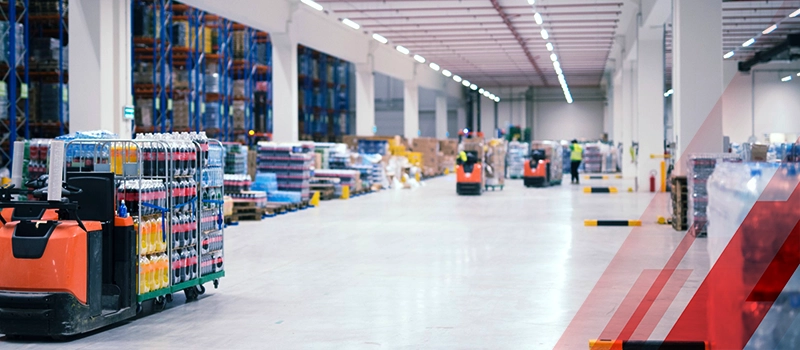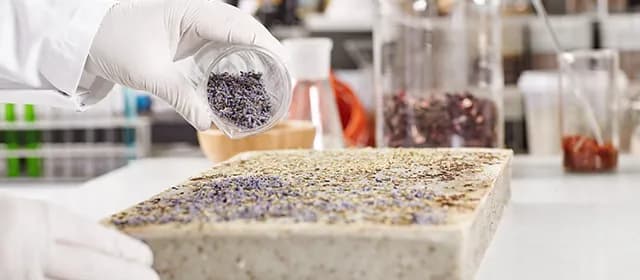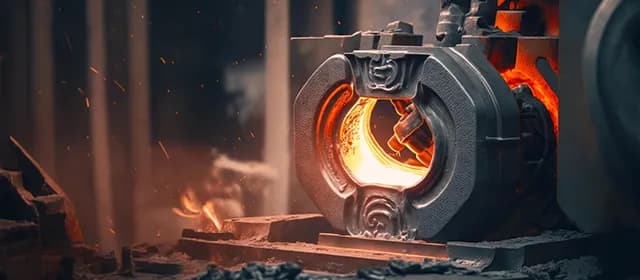The US imported 19.32 billion worth of fruits between 2021-2022 as per the latest data released by the Foreign Agricultural Trade of the United States (FATUS). This recent trend of consuming exotic fruits and vegetables has been trending across prominent regions such as the UK and the US.
Ever wondered how we get to have these exotic fruits, vegetables, groceries, and ice creams from across the globe all-round all year? This is all possible owing to temperature-controlled warehouses called ‘cold storage’.
So what do these temperature-controlled warehouses do, and how are they playing an important role in the food and beverage industry this article is about to discuss in detail.
What is a Cold Storage Plant?
Cold storage is a facility that primarily stores food items that have a short shelf life and are highly susceptible to spoilage under normal conditions. Fruits, vegetables, fish, and meat are examples of these. These food items are stored in optimal temperature (primarily low) and humidity environments, depending on the item. Almost all cold storage rooms are built with these properties pre-configured based on what is stored. Some cold rooms are designed with adjustable properties.
Cold storage units also provide infrastructure along the entire supply chain, such as pre-cooling, weighing, sorting, grading, waxing, packaging, and delivering goods almost anywhere in refrigerated couriers around the world, ensuring that the prescribed temperature of the product remains constant until it reaches the consumer's hands.
Cold storage and related warehousing are not new concepts. We've been storing food at cold temperatures since people have always needed to eat, long before the convenience of home fridges and freezers were invented. The premise is that keeping food cold keeps it fresher for longer, preserving quality and safety.
Cold storage warehousing has progressed from Victorian-era ice houses to industrial-scale processes that make use of sophisticated, high-tech facilities, often with high levels of automation. COVID-19 vaccines, for example, had to be stored in freezing temperatures to be preserved during 2021-2022.
How Does Cold Storage Plant Function to Keep Perishables Fresh?
Cooler temperatures are maintained in cold storage warehouses through the use of insulation and HVAC cooling systems. Insulation serves the same purpose in cold storage warehouses as it does in houses: it helps to limit heat transfer between the inside and outside.
Cooling systems for cold storage warehouses, on the other hand, are a little more complicated. However, the basic idea is that they absorb and remove heat and replace it with cooler air using a combination of coolant, pipes, radiators, and fans.
There are 6 types of cold storage typically used
- Refrigerated containers are the most common and effective type of cold storage facility. They are suitable for a small number of items that require optimal temperature storage. Furthermore, workers can easily transport them from one location to another.
- Blast Freezers and Chillers - These are used for large storage needs that require the items to be chilled when they arrive at the customer. These are used in high-end restaurants and similar businesses.
- Cold rooms - These can be refrigerants or blast freezers depending on the need, but they are much larger and take the form of entire rooms.
- Pharmaceutical grade cold storage warehouse - These are warehouses that are equipped with cold storage technologies. They are specifically used in hospitals and medical facilities to store blood, certain vaccines, and biopharmaceuticals.
- Plant attached cold storage warehouse - These facilities are built when manufacturers want to keep the cold rooms within their factories. Conveyor belts are used to transport intermediate or finished goods to cold storage. As a result, it is an on-site service.
- Dedicated custom cold storage warehouse facilities - This category includes businesses that have specific cold storage requirements and require customized cold rooms. Instead of constructing entire cold rooms, they can have one built for them by 3PL logistic services or warehousing solution companies.
Industry and Applications
To keep various products in good condition, freezing temperatures are required. It is used for more than just fruits, vegetables, and meat. A long list of items can be stored in a temperature-controlled environment. Cold storage warehouses can keep products at the proper temperature or keep them safe during long trips. This eliminates the need to be concerned about your products spoiling or expiring. The following are some industrial applications and end users:
- Retail - Frozen foods such as meat, poultry, seafood, dairy, fruits, and vegetables must be kept at a temperature of around -18°C to avoid deterioration or contamination. You can choose your cold storage solutions based on the duration of the storage and logistics to make the product available to customers.
- Post-harvest goods - Fresh produce, such as fruits and vegetables, milk, and even fish, must be stored at cooler temperatures or refrigerated after harvest to avoid ripening and degradation. Fruits and vegetables, in particular, require a controlled environment with the proper amount of oxygen, carbon dioxide, nitrogen, humidity, and so on to extend their shelf-life.
- Pharmaceuticals industry - To ensure safety and integrity, drugs, vaccines, biologics, laboratory specimens or samples, and other pharmaceuticals must be kept at specific temperatures. Temperature requirements are typically between 2°C and 8°C.
- Hospitality industry - Restaurants and hotels must keep beverages, food ingredients, and stock items safe and readily available. These establishments also keep excess meal preps for quick serving and catering, necessitating effective refrigeration solutions that preserve flavor, quality, and texture.
- Horticulture - Florists and suppliers also need cold storage facilities to keep ornamental plants or flower stems (once they have been cut). Even seeds, spices, and dried fruits require proper cold storage conditions to have a longer shelf life.
Equipment, Monitoring, and Maintenance of Cold Storage
Since the products in a cold storage warehouse are temperature sensitive, such facilities usually have sensors that control the environmental temperature inside. Since humidity is a major factor, dehumidifiers are used to control and reduce ice formation.
Even though cold storage warehouses must maintain specific temperatures at all times, product inflows and outflows present an additional challenge.
Secure airlock systems are installed to help maintain temperature consistency with the constant movement of goods. These anti-rooms typically consist of two high-speed doors, one leading into the cold storage space itself and one leading to the outside, both of which are never open at the same time. This reduces condensation and cold loss, as well as any sudden temperature changes.
Mobile pallet racking may be included in cold warehouse storage solutions. By using only one operating aisle, this system saves floor space. When compared to conventional pallet racking, this saves 40% of floor space while increasing overall storage capacity by up to 80%.
Drive-in racking is another excellent option for chilled and cold storage goods. This warehousing method allows for large-scale storage, increasing the efficiency of the same available space by up to 90%.
Finally, properly cleaning a cold storage warehouse prevents the spread of microorganisms that may damage stored products.
Conclusively, cold storage finds application in various industries to prolong the shelf-life and ensure the safety, integrity, and freshness of the products. Depending on the type of food or product, capacity, storage conditions, and storage duration, your business will need to select energy-efficient and cost-effective cold storage.




